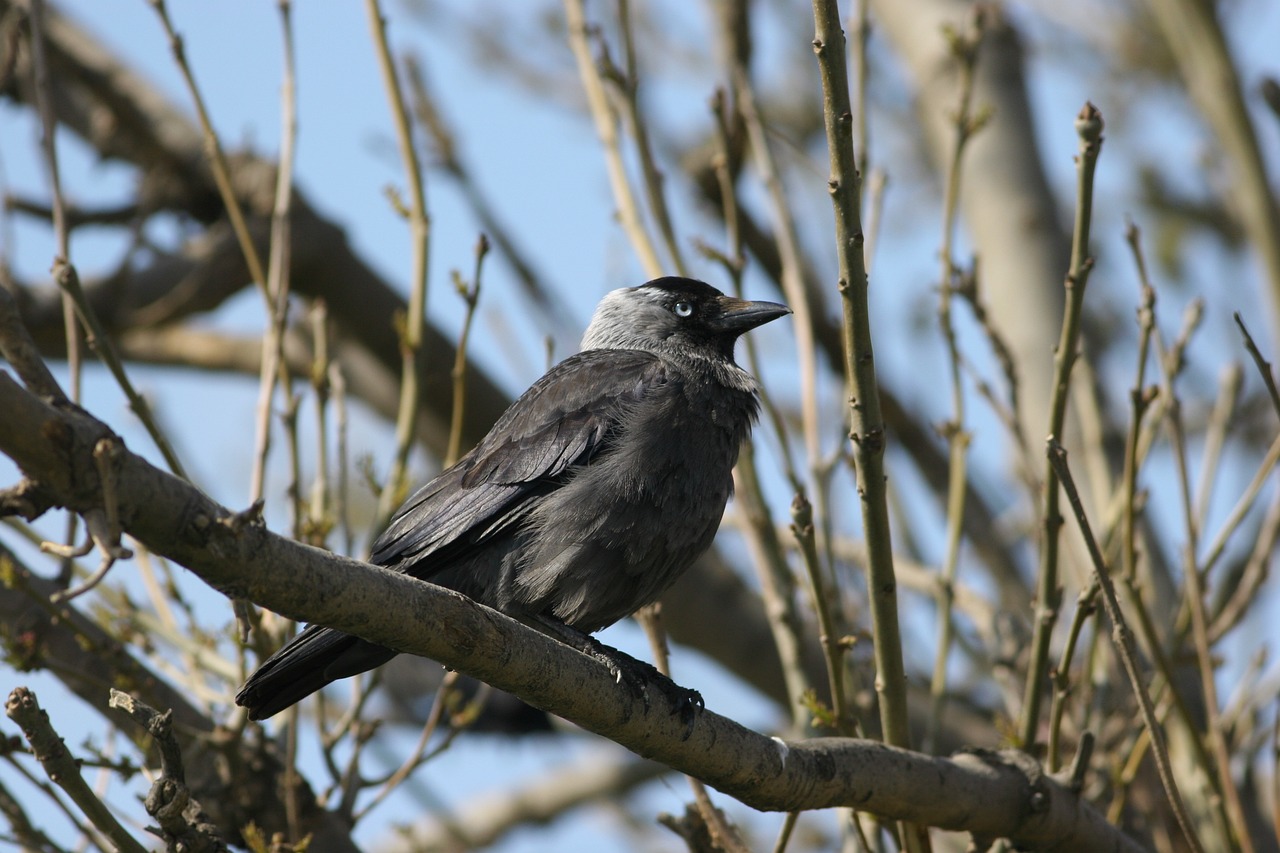It’s an early winter morning. The sun hasn’t risen yet, but jackdaws* that have spent the night in large groups in roosting trees start calling. Over time the sound becomes louder and after a while, suddenly many (or even all) birds take off together in a mass departure.
This is common behaviour and researchers have recently learned more about how jackdaws coordinate such collective action.
They studied nine separate winter roosting groups that varied in size from around 160 to 1470 individuals. They recorded their call intensity and how many birds left the roosts over time.
Usually, the call intensity increased during one to two hours before departure. Jackdaws tended to depart the roost earlier, in larger groups and more quickly when calling intensity rose faster and reached a higher final intensity.
The proportion of the whole group leaving together didn’t increase gradually with the increase in the call intensity. But when a call intensity reached a specific threshold suddenly a majority or even the whole group left the roost. Such a pattern is similar to the one seen in quorum-based decision-making, where collective action is triggered when a minimum threshold for consensus is reached. It is possible that intensive calling excites the birds so that if some of them move, the whole flock takes off. Although the researchers noticed that sometimes the jackdaws didn’t reach a consensus and left in smaller groups over a period of half an hour.
To confirm the effect of calling intensity on departure time, researchers also performed playback experiments. They broadcasted the pre-recorded jackdaw calls via multiple speakers within the roost. Such an increase in call intensity caused earlier mass departures, compared with no playback or playback of wind sound. This indicates that the birds actually react to the calls and not noise more generally.
As the authors concluded, “jackdaws appear to effectively signal their willingness to leave, providing large groups with a means of achieving consensus to perform cohesive, collective departures from the roost. […] Consensus is achieved through the effect of calling build-up (excitation) to the point where mass collective departures can be triggered (activation)”.
If there are jackdaw roosts near you, maybe it’s worth getting up a bit earlier to listen to their democratic process?
* Jackdaws (Corvus monedula) are related to crows. The species is widely distributed across Eurasia. Jackdaws are highly social throughout the year. In winter they forage on grounds spread over a wide area and fly in large flocks to congregate in roosts where they spend the night. These roosts can contain hundreds or even thousands of individuals of different ages. In the morning, jackdaws commonly depart suddenly from the roost in large flocks that at first remain cohesive but then tend to split into smaller flocks that fly together towards foraging sites.
Polską wersję tego wpisu możesz znaleźć tutaj.
Photo: Zine Mo from Pixabay.com

